
Book Title
10th Edition
ISBN: 9781337605656
Author: CROSS
Publisher: CENGAGE L
expand_more
expand_more
format_list_bulleted
Question
Chapter 15, Problem 5BCP
Summary Introduction
Case summary: Person JT and person JC got married. They bought a home with a loan which was secured by a mortgage. Later they took out the second mortgage. On their divorce, the decree passed by the court required person JC to pay the first mortgage and person JT and JC to make equal payments on the second mortgage. The decree provides that JC would receive all the proceeds on the sale of the home. JC learned that the company auto now had a lien on a home because JT had not made a payment on his car. JC used all the sale proceeds to pay off the lien and mortgages. JT filed a petition for chapter-13 bankruptcy.
To explain: The discharge of the debts under the bankruptcy code.
Expert Solution & Answer
Want to see the full answer?
Check out a sample textbook solution
Students have asked these similar questions
PLEASE HELP! NOTICE. THERE ARE FIVE CELLS ON THE LEFT SIDE TO FILL. THE DROPDOWN SHOWS THE OPTIONS FOR THESE CELLS.
1. A doctor quits his job, which pays $77,000 per annum, to open a non-governmental
organization (NGO) to serve the needs of orphans. His annual expenses for the NGO
amounts to $62,700 for food and daily supplies, $9,400 for maintenance, and $1,800 for
books. What is his opportunity cost of opening the NGO? (Show working)
2. During the COVID-19 pandemic, hospitals worldwide faced severe resource constraints,
including:
a. Limited ICU beds
b. Shortage of ventilators
c. Insufficient doctors and nurses
d. Lack of vaccines in early 2021
Governments and hospitals had to make critical decisions about who receives treatment
first and how to allocate limited resources efficiently.
In no more than 150 words and using core economic concepts of scarcity, choice and
opportunity cost, how would you help your government make these critical decisions?
What is a good response to this post?
A few years ago, I was working at a third-party delivery service provider for Amazon and I was tasked with streamlining our company’s employee onboarding process. My goal was to reduce the average onboarding time from 15 full work days to 7 full work days without increasing costs or diminishing training experience. The challenge was aligning our limited resources—a small team and existing tools—with this ambitious objective while meeting customer expectations for a smooth and informative experience. To begin, I assessed the overall environment, specifically the training experience our new employees had with onboarding and driver training within our industry. It became clear that many competitors were already shifting towards faster, more user-friendly onboarding processes. Internally, I mapped out our resources, identifying inefficiencies in our current workflows as the primary bottleneck. Armed with this analysis, I strategized a plan to automate…
Knowledge Booster
Similar questions
- Calm Ltd has the following data relating tò two investment projects, only one of which mayb e s e l e c t e d :The cost of capital is 10 per cent, and depreciation is calculated using straight line method.a . Calculate for each of the project:i. Average annual accounting rate of return on average capital investedi i . Net Present Valuei l l . I n t e r n a l R a t e o f Returnb. Discuss the relative merits of the methods of evaluation mentioned above in (a).Q.4a . In the context of process costing, discuss the following concepts briefly, i . Equivalent unitsNormal lossill. Abnormal lossi v. Joint productsV . By productsb . Discuss the different types of standard costing and objectives of standard costing.arrow_forwardPlease help me correct the wrong answers:arrow_forwardWhat are total assets at the end of the year?arrow_forward
- What is a good response to this post? The organization I’ve chosen is Amazon, and the legal risks it faces as it expands into the Swedish e-commerce market. Sweden has a highly unionized workforce with robust labor protections. Amazon’s traditional labor practices have faced criticism and conflicts with Swedish norms, leading to disputes with labor unions. Amazon has been accused of interfering with workers’ right to unionize, including allegations of intimidation, retaliation, and surveillance (Albuquerque, 2024). Amazon upholds principles and has established “Amazon’s Global Human Rights Principles,” which outline its commitment to respecting the human rights of all workers and creating a safe, inclusive, and respectful workplace. However, shareholders believe that these principles can be achieved without unionization and claim that a significant portion of workers rejected union efforts. Amazon is an American business deeply rooted in American culture and might not be the best fit…arrow_forwardWhat is the amount of income or loss?arrow_forward1.11 accarrow_forward
- What is a good respponse to this statement? I have chosen Starbucks in Australia for this discussion. Looking into this company you find it almost everywhere in the world with almost ease except in Australia. This is due to the economic risk it is to expand there. Australia is known to love coffee and has overall grown to having a huge industry there so in the companies' thoughts it should do well. However, Starbucks tends to make sweeter drinks at a higher cost compared to the local cafes. Australians also tend to favor the small local cafes in support of small businesses. This caused Starbucks to close most of their locations due to them growing to quickly in the amount stores they had to their overall popularity.arrow_forwardFinancial accounting problem i need soln.arrow_forwardWhat is a good response to this statement? I have chosen Starbucks in Australia for this discussion. Looking into this company you find it almost everywhere in the world with almost ease except in Australia. This is due to the economic risk it is to expand there. Australia is known to love coffee and has overall grown to having a huge industry there so in the companies' thoughts it should do well. However, Starbucks tends to make sweeter drinks at a higher cost compared to the local cafes. Australians also tend to favor the small local cafes in support of small businesses. This caused Starbucks to close most of their locations due to them growing to quickly in the amount stores they had to their overall popularity.arrow_forward
arrow_back_ios
SEE MORE QUESTIONS
arrow_forward_ios
Recommended textbooks for you
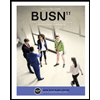 BUSN 11 Introduction to Business Student EditionBusinessISBN:9781337407137Author:KellyPublisher:Cengage Learning
BUSN 11 Introduction to Business Student EditionBusinessISBN:9781337407137Author:KellyPublisher:Cengage Learning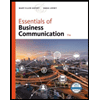 Essentials of Business Communication (MindTap Cou...BusinessISBN:9781337386494Author:Mary Ellen Guffey, Dana LoewyPublisher:Cengage Learning
Essentials of Business Communication (MindTap Cou...BusinessISBN:9781337386494Author:Mary Ellen Guffey, Dana LoewyPublisher:Cengage Learning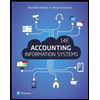 Accounting Information Systems (14th Edition)BusinessISBN:9780134474021Author:Marshall B. Romney, Paul J. SteinbartPublisher:PEARSON
Accounting Information Systems (14th Edition)BusinessISBN:9780134474021Author:Marshall B. Romney, Paul J. SteinbartPublisher:PEARSON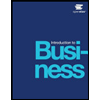
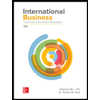 International Business: Competing in the Global M...BusinessISBN:9781259929441Author:Charles W. L. Hill Dr, G. Tomas M. HultPublisher:McGraw-Hill Education
International Business: Competing in the Global M...BusinessISBN:9781259929441Author:Charles W. L. Hill Dr, G. Tomas M. HultPublisher:McGraw-Hill Education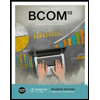

BUSN 11 Introduction to Business Student Edition
Business
ISBN:9781337407137
Author:Kelly
Publisher:Cengage Learning

Essentials of Business Communication (MindTap Cou...
Business
ISBN:9781337386494
Author:Mary Ellen Guffey, Dana Loewy
Publisher:Cengage Learning

Accounting Information Systems (14th Edition)
Business
ISBN:9780134474021
Author:Marshall B. Romney, Paul J. Steinbart
Publisher:PEARSON


International Business: Competing in the Global M...
Business
ISBN:9781259929441
Author:Charles W. L. Hill Dr, G. Tomas M. Hult
Publisher:McGraw-Hill Education
